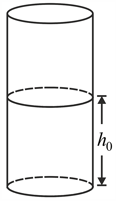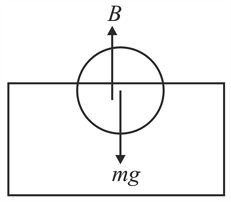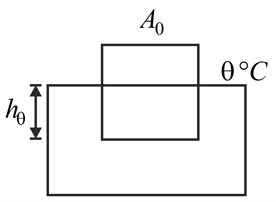The height of liquid column in the cylindrical container is , at . If the temperature of liquid rises to , assuming the expression of both solid (container) and liquid, find the height of the liquid column. Assume and as the coefficient cubical expression of liquid and solid.



Important Questions on Thermometry, Thermal Expansion and Calorimetry
The coefficient of volume expansion of glycerin is . What is the fractional change in its density for a rise in temperature?
A solid floats in a liquid at with of it immersed. When the liquid is heated to , the same solid floats with of it immersed in the liquid. Calculate the coefficient of expansion of the liquid. Assume the volume of the solid to be constant.
A body is floating inside a liquid. If we increases temperature then what changes occur in buoyancy force (Assume body is always in floating condition)

A metal sphere floats on mercury. The fraction of volume of the sphere submerged in mercury is . The coefficients of expansion of the metal and mercury are and , the temperature of system is increased by . Then find the fraction of the volume of the sphere submerged in mercury at this situation.
A metal sphere floats on mercury. The fraction of volume of the sphere submerged in mercury is . The coefficients of expansion of the metal and mercury are and , the temperature of system is increased by . Then under what conditions will the sphere sink or lift up considering expansion of solid?
A metal sphere floats on mercury. The fraction of volume of the sphere submerged in mercury is . The coefficients of expansion of the metal and mercury are and , the temperature of system is increased by . Then if we neglect the expansion of solid, determine the temperature rise at which the solid is completely immersed?
A sinker of weight has an apparent weight when placed in a liquid at a temperature and when weighed in the same liquid at a temperature . The coefficient of cubical expansion of the material of the sinker is . What is the coefficient of volume expansion of the liquid?
A cubical of coefficient of linear expansion , floats in the liquid of coefficient of volume expansion . If the depth of immersion of the cube at is , find the depth of immersion of the cube at .

